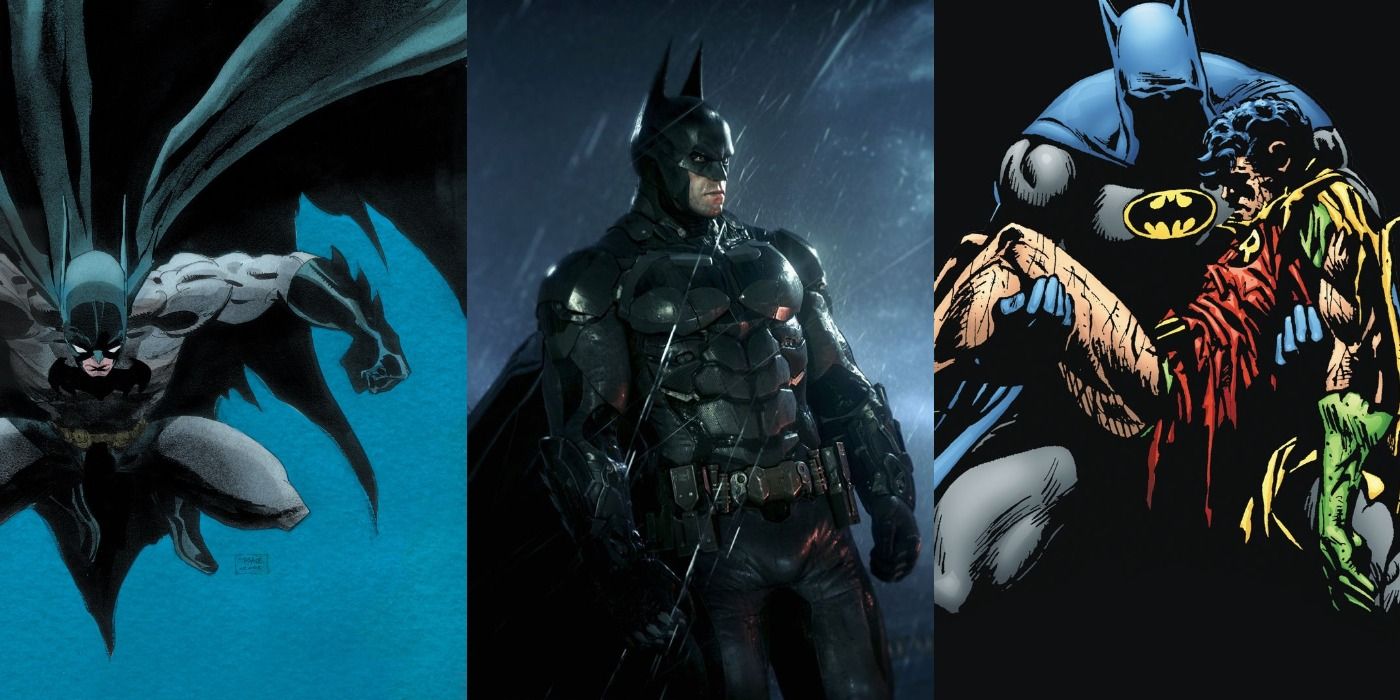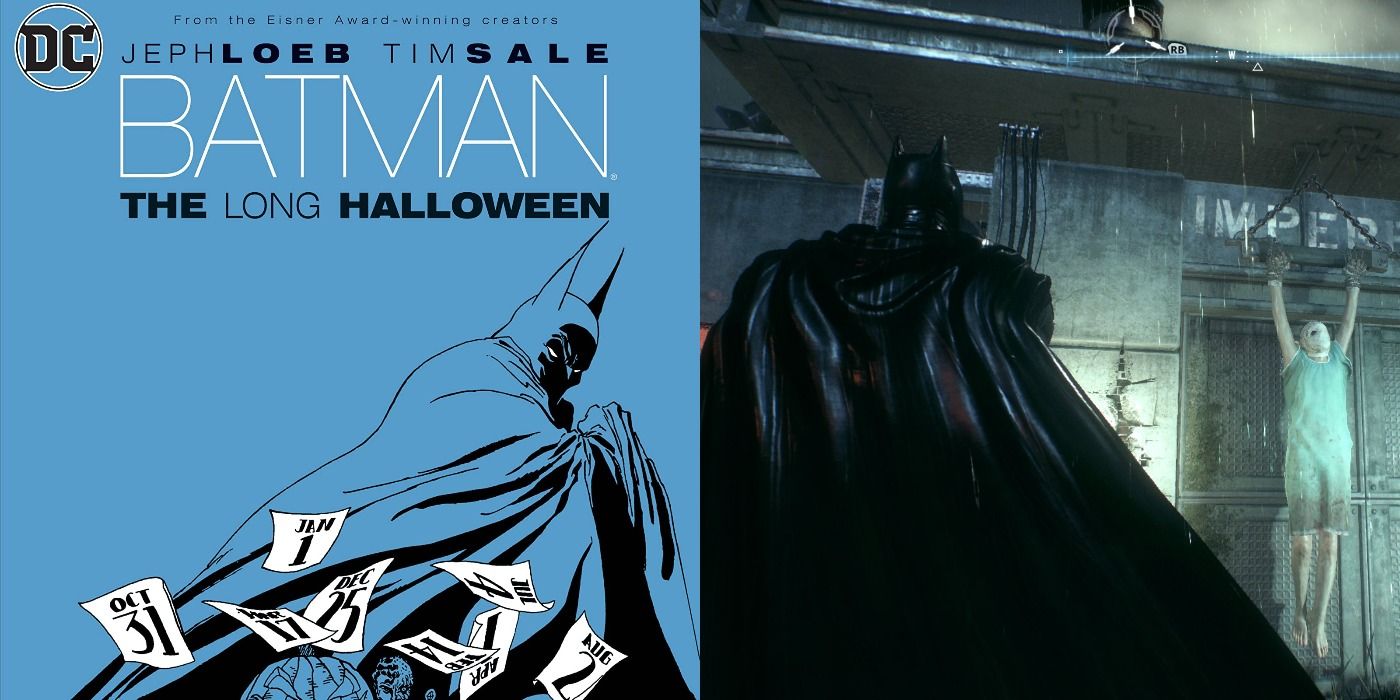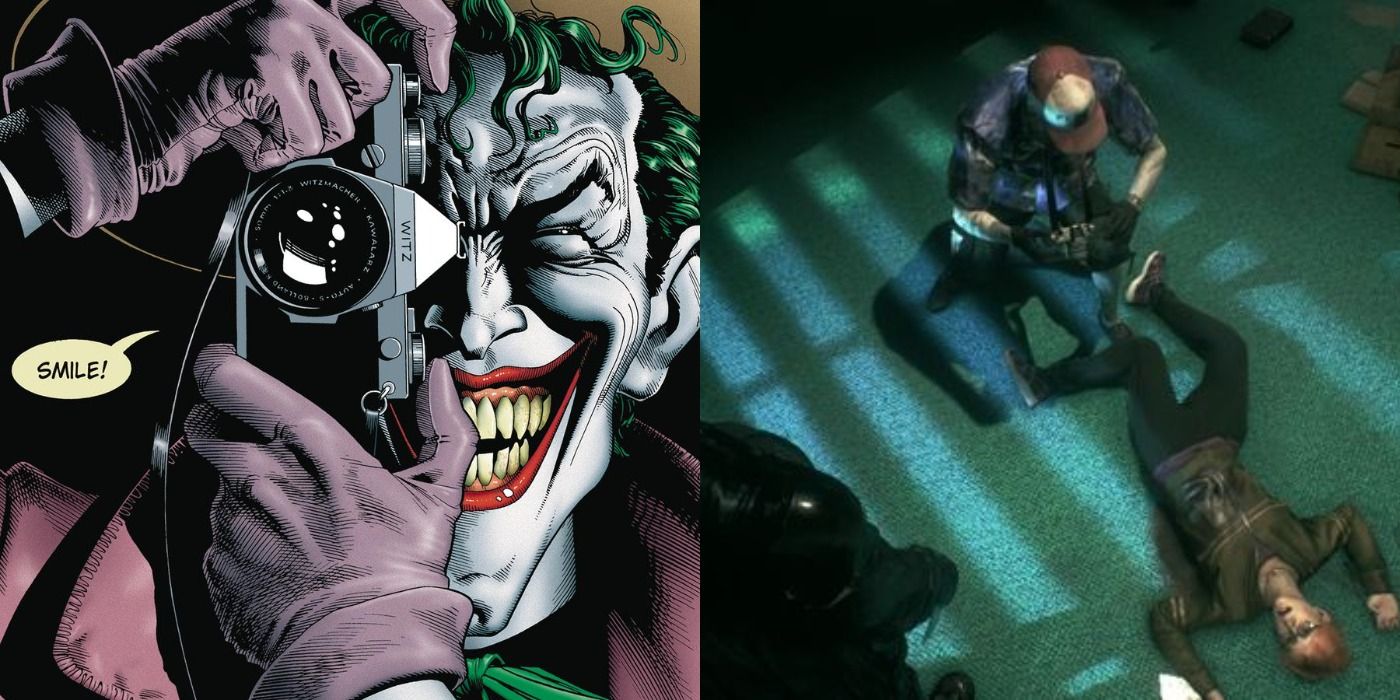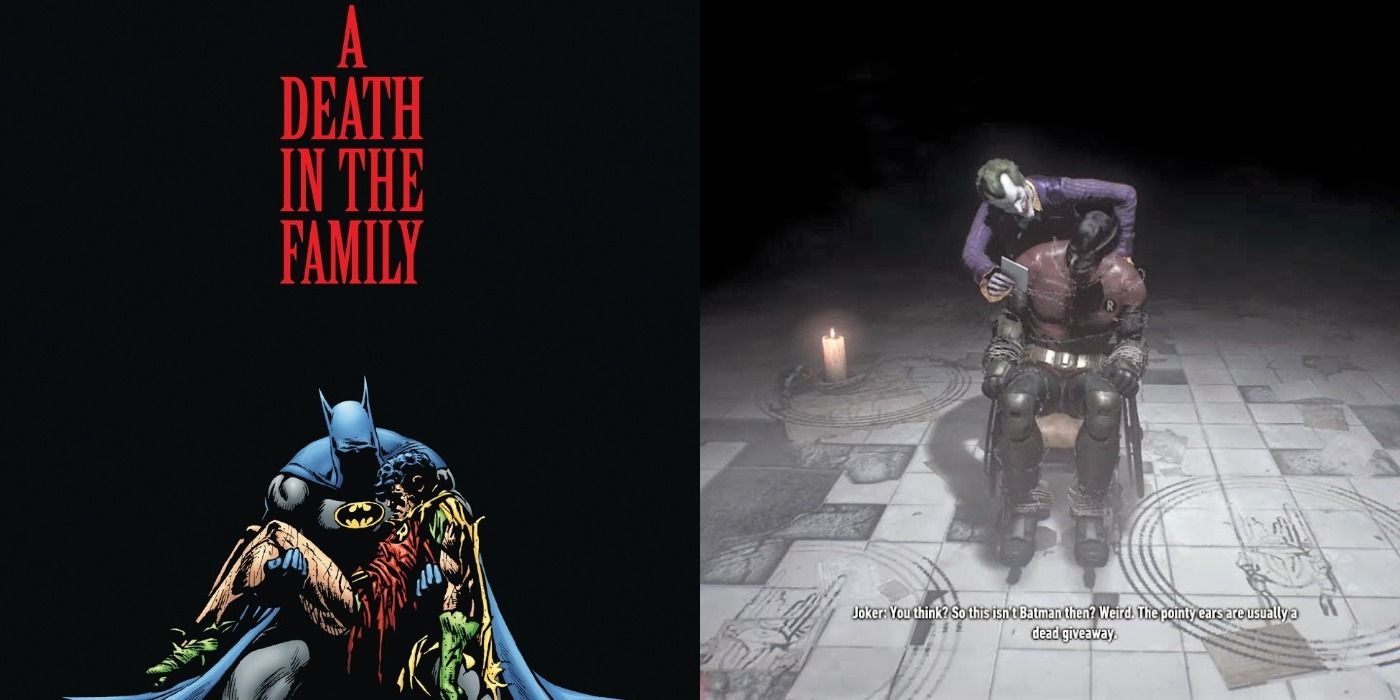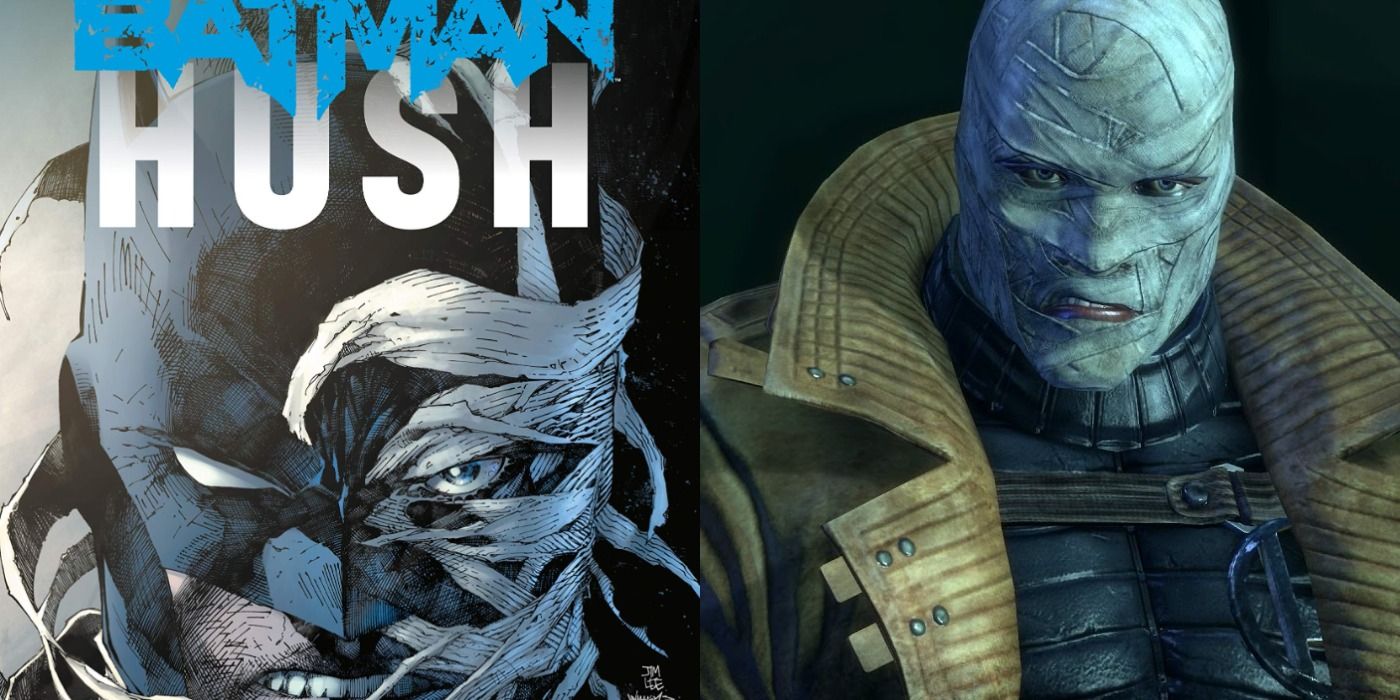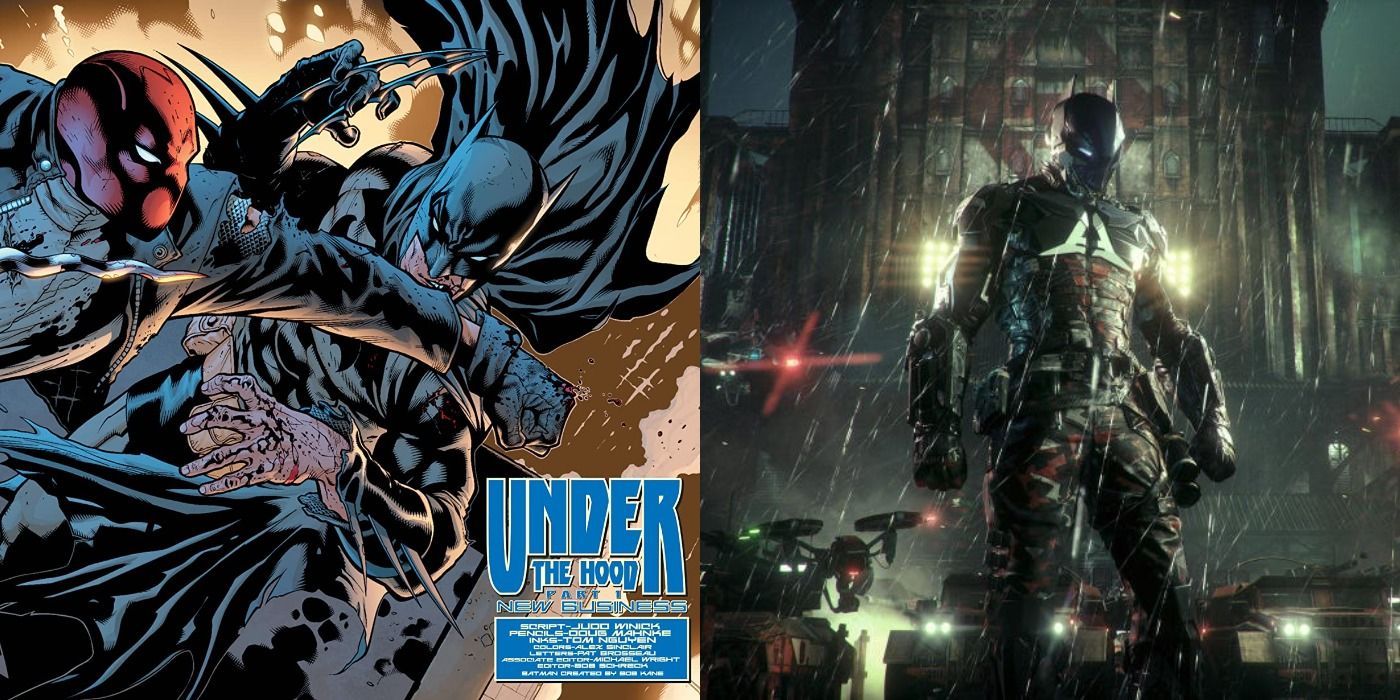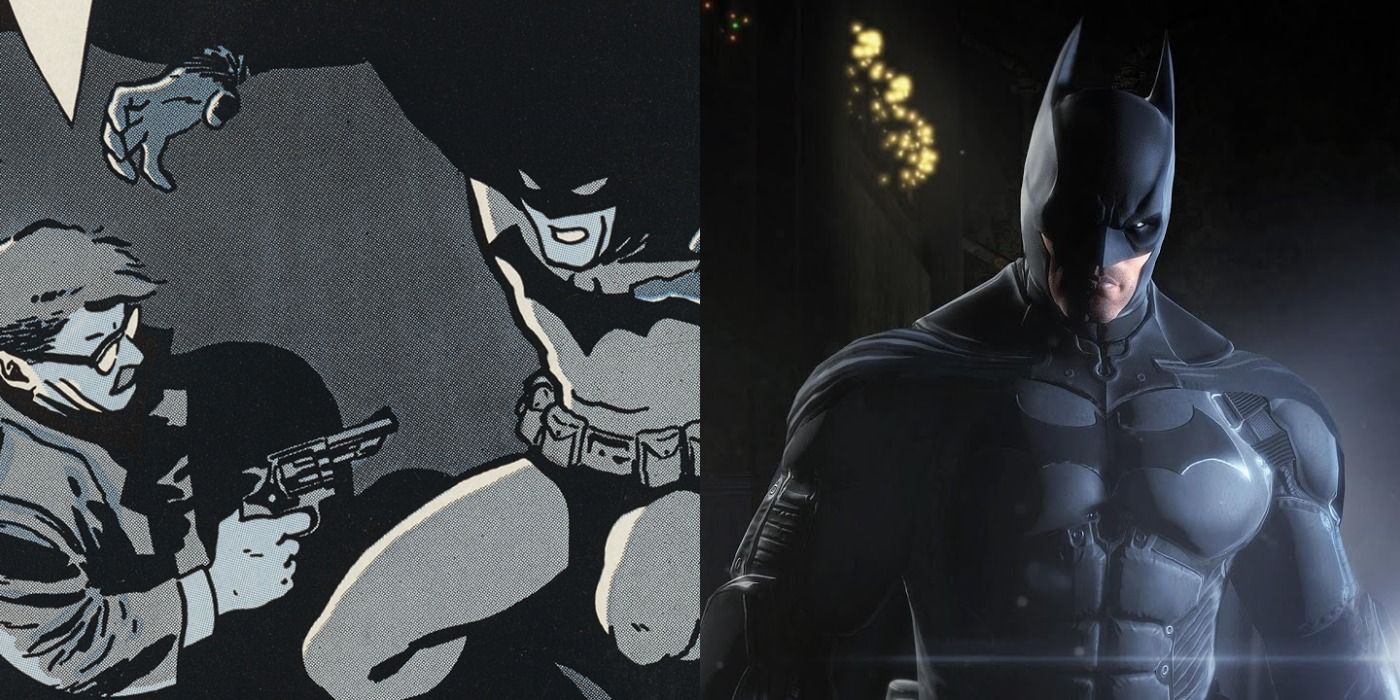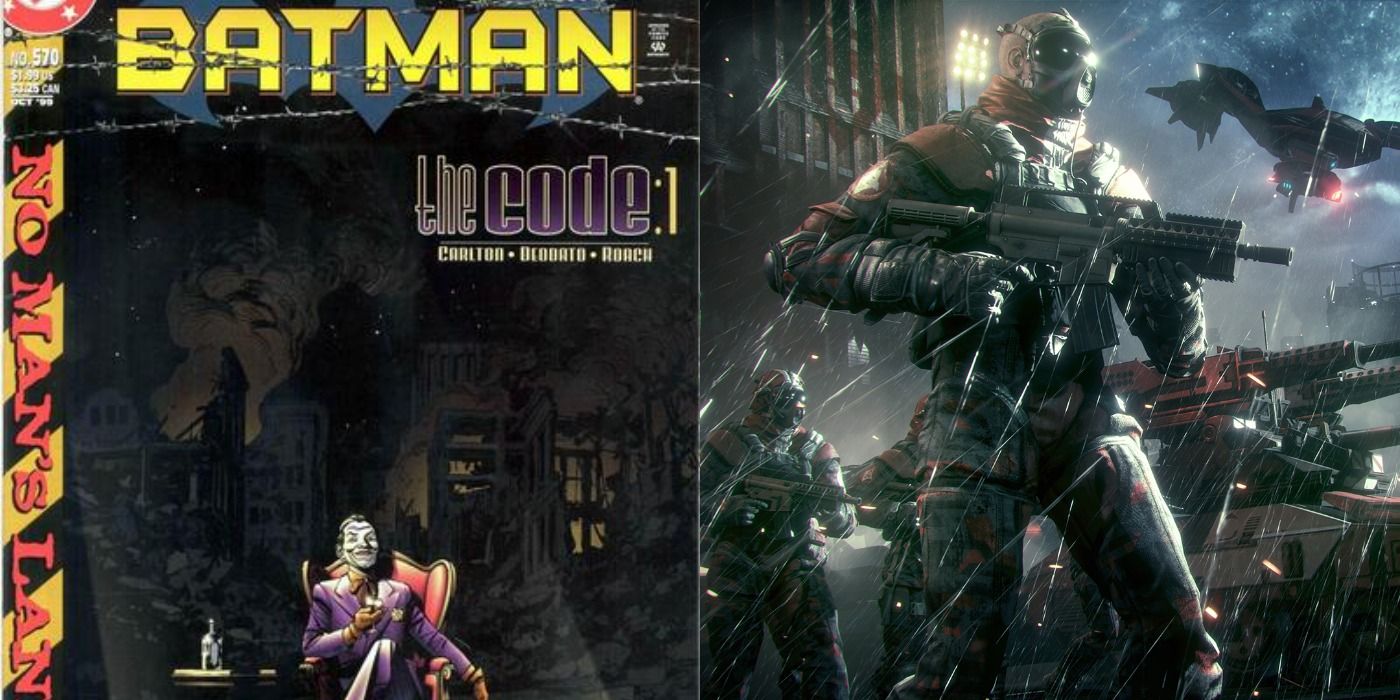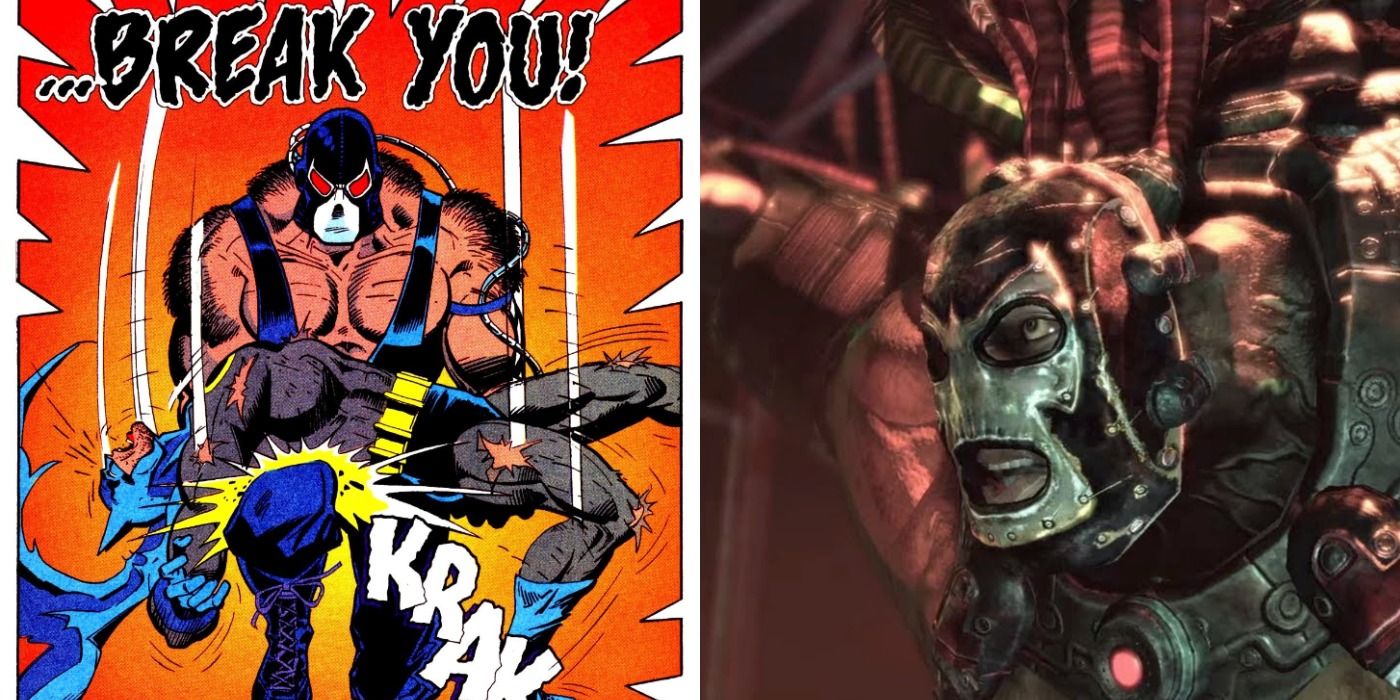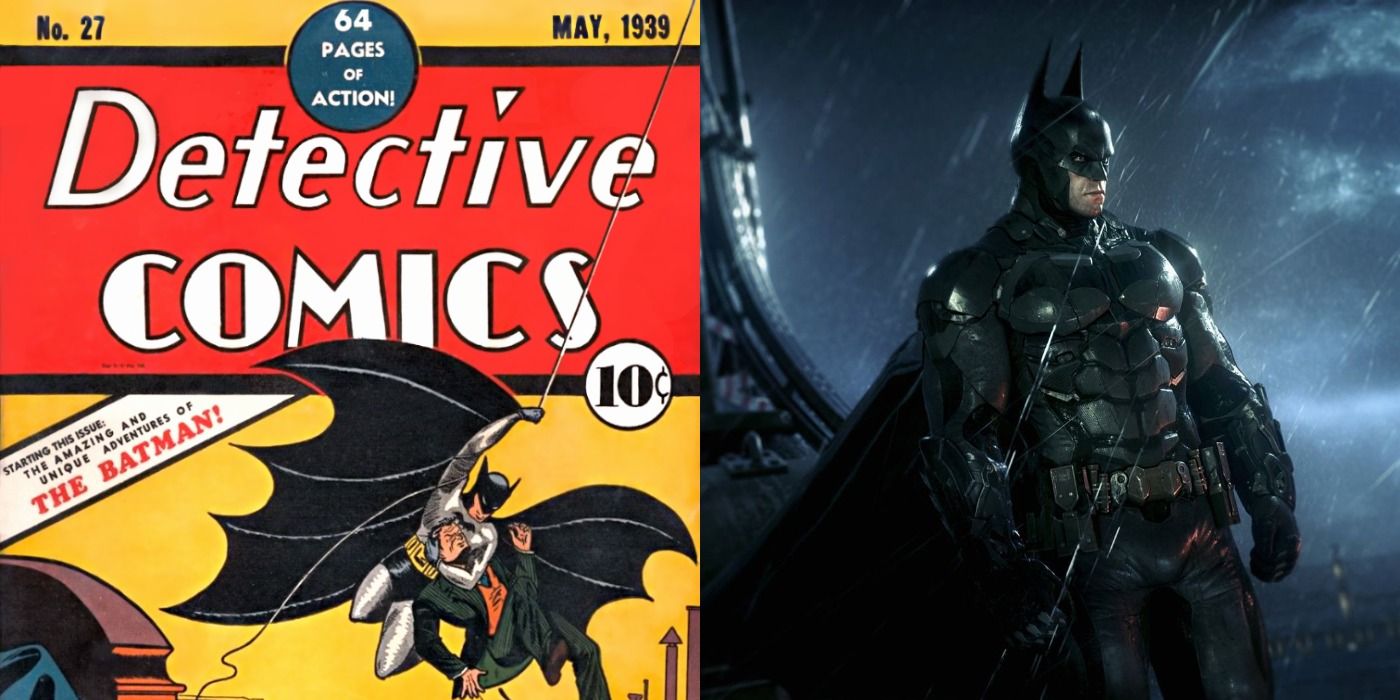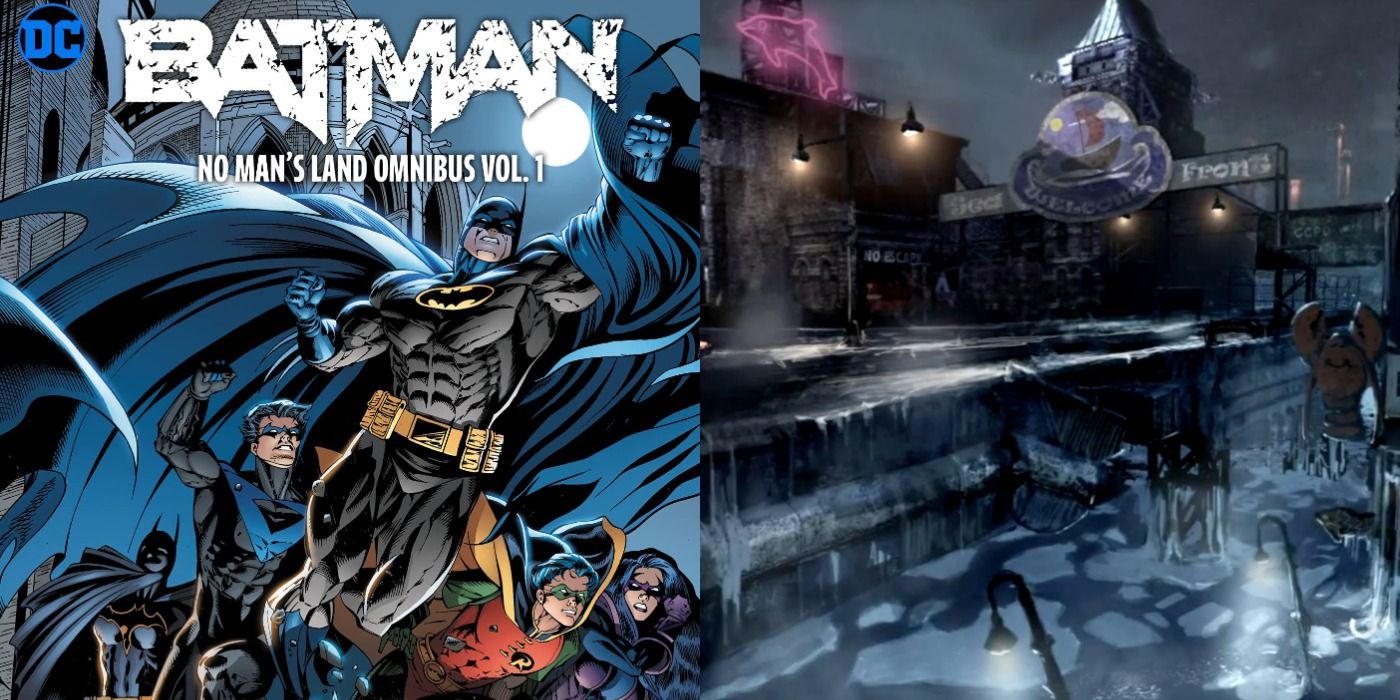Rocksteady's Arkham series did to Batman in games what the Nolan trilogy did for him theatrically. The games have been widely praised for revolutionizing the character and the superhero gaming genre in general. Its "Arkhamverse" is set in its own separate canon from other continuities followed in movies, shows, and comics, but many references show evidence of outside influence.
Throughout the series, several nods to various Batman comic books have been made for fans of the iconic character to take notice of. With the freedom that Rocksteady got in developing their own corner of the Dark Knight's mythos, bringing in pieces of comics continuity helped with the lore and worldbuilding.
The Long Halloween (Arkham Knight)
During one of the Batman: Arkham series' best side missions, one of the most on-the-nose references is made for The Long Halloween. In "The Perfect Crime," as Batman investigates a grisly series of murders done by Professor Pyg, Alfred and the Caped Crusader discuss the case over comms where the former mentions that this brutal crime spree resembles one that went on years ago on Halloween.
Alfred even goes on to say it turned out to be a "long one." Jeph Loeb and Tim Sale's The Long Halloween is frequently cited as the best Batman comic ever written. The arc was known for delving brilliantly into the crime-noir roots of the character, allowing the superhero to flex his detective prowess.
The Killing Joke (Arkham Knight)
While the Joker is dead in the Arkhamverse by the end of Arkham City, he "lives on" within Bruce Wayne's psyche in Knight. One of the most visceral parts of the story is when he hallucinates the events of Alan Moore's The Killing Joke. At one point in the Clock Tower, Batman essentially relives the Joker shooting Barbara Gordon, confining her permanently--in this world--to a wheelchair and forcing her to give up the Batgirl mantle.
The Killing Joke was another one of the most acclaimed comics for the character and was part of the crescendo that started in the early '70s that helped shed Batman of the over-the-top camp from the Silver Age. Similarly, it's served as a major influence for Heath Ledger's rendition of --arguably--Batman's greatest villain in The Dark Knight.
A Death In The Family (Arkham City, Knight)
An easy reference to miss for Jim Starlin's A Death in the Family happens in Arkham City, though, it's in one of the game's Challenge Maps. When playing as Robin against Joker henchmen, the supervillain can be heard over speakers mockingly wonder whether he already killed this Boy Wonder. Meanwhile, this plot point is much more narrative-driven in Knight, as Batman hallucinates Jason Todd being tortured and killed by Joker.
And, of course, Jason is a key member of the cast as the Arkham Knight. A Death in the Family was a landmark comic, as it was the first time a Robin was killed off. In every universe where this arc is canon, Batman notably acknowledges that Jason's upbringing and murder were his greatest failure.
Hush (Arkham City)
Given the premise and origin story for Hush both in the comics and in the games, his presence is essentially citing the comic arc by default. In Arkham City, Thomas Elliot/Hush can actually be found quite early, appearing in the makeshift clinic unconscious, face wrapped in bandages, and a vice-grip on an icebox.
Later, in a side mission dealing with a case of murders around Arkham City, Elliot/Hush reveals to a trapped Batman that he's planning revenge on Bruce Wayne by fashioning body parts to make his face look like him. His story arc is later completed in a side mission during Knight. It's not the exact retelling of Hush, but it's still a reference that also makes certain elements of that comic canon to the Arkhamverse.
Under The Hood (Arkham Knight)
Though a fan common fan complaint about the plot of this game was how apparent it was that Jason was the Arkham Knight despite attempts at mystery, his inclusion in the story itself was genuinely well-executed.
His character arc coming full circle with Batman in the series finale was thematically fitting, making for one of the Arkham games' best boss fights, and that by default directs to Under the Hood. This is the arc that dealt with the reemergence of the once-dead Jason at the hands of Joker. Similar to Hush, this reference didn't become a 1:1 adaptation but reimagined the key premise behind the comic.
Year One (Arkham Origins)
Frank Miller's Year One is often regarded as the definitive Batman origin story in any medium, so it's unsurprising that WB Montréal's prequel Arkham Origins cites and borrows aspects from that comic. The game itself takes place during the Caped Crusader's second year on the job, but the uneasy relationship between Batman and Gordon definitely uses the early parts of the comic as an influence.
Though, should the player dig a bit deeper, extortion tapes recording conversations between Black Mask and Commissioner Loeb can be listened to, with them talking about Arnold Flass (one of the many crooked officers at the GCPD in Gordon's early days in Gotham during Year One). Another tape talks about Gordon's affair with Sarah Essen.
The Code (Arkham Knight)
One of the ways players can pick up on some interesting and/or funny pieces of information is by listening in on the banter or small talk between thugs in real-time. In the last game, players can eventually hear the Arkham Knight's militia soldiers bring up a comic story from the late '90s.
The militia can be heard talking about a time when the Joker attempted to run for President, referencing The Code. It's callbacks like these that, in retrospect, can be accepted as having happened in this universe in a near-identical fashion, unlike others like Hush and Under the Hood that are happening currently in-game.
Knightfall (Arkham Asylum)
Bane was admittedly one of the weaker written supervillains in Rocksteady's Arkham games, but in the first, he's a catalyst for a fun nod to his iconic arc as the main antagonist. When Batman fights him in Arkham Asylum, the former declares that this time he'll break Bane before ramming the herculean villain with the Batmobile.
This one-liner is of course talking about the classic Knightfall arc where Bane breaks Batman's back over his knee, putting him out of commission for an extended period of time. This was among the Dark Knight's greatest comebacks, but it couldn't have happened exactly the same way in-universe. Azrael--who takes over as Batman in the interim--doesn't make his first appearance until Arkham City.
Detective Comics #27 (Arkham Knight)
Batman has been around in pop culture now for over 80 years, and Arkham Knight has an easter egg that touches on this. Once the player needs to go into Panessa Studios, the access code needed to access Stage C is 0539.
If that number is converted into a date, it comes out to be May 1939. That is the cover date/debut Batman made in DC Comics through Detective Comics #27. The character has come a long way since then throughout every form of media, and Rocksteady did a good job at putting in these throwbacks in both major and smaller details like this one.
No Man's Land (Arkham City)
It's another more obscure reference, but the sweeping No Man's Land comic book arc is suggested in some flavor text of the game. In one of the discoverable pieces of lore about the universe players can find, "Seismic Disturbances" talks about events that somewhat reflect the comic.
At some point soon before the prison was set to open, inexplicable seismic incidents flooded the Amusement Mile district. Even the nod to The Code could be considered as a No Man's Land callback, as Joker was trying to run for President of "No Man's Land" itself.

